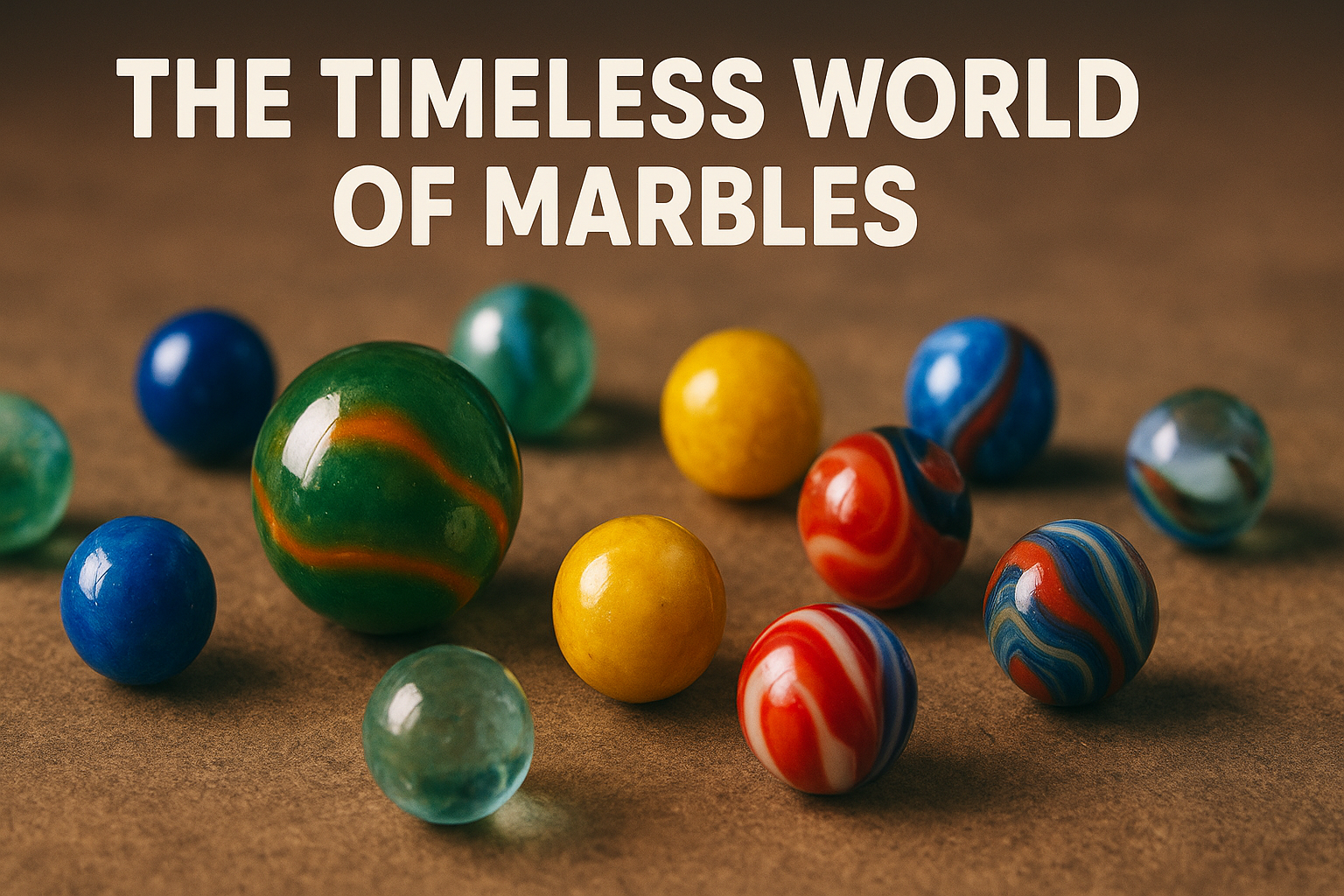Marbles, known in many parts of the world and called “kelereng” in Indonesia, are more than just small glass or stone spheres. These tiny objects carry centuries of history, cultural traditions, and a universal appeal that transcends borders. From children playing on dusty streets to collectors hunting for rare, hand-crafted pieces, marbles represent both play and artistry.
This article takes you on a journey into the fascinating world of marbles—exploring their origins, rules of the game, cultural impact, types, collecting value, and their modern revival. Whether you grew up playing them or are simply curious about their legacy, marbles remain one of the most timeless toys ever created.
The Origins of Marbles
Marbles are believed to be among the oldest toys in human history. Archaeologists have discovered marble-like objects in ancient civilizations:
- Egypt: Small stone balls were found in tombs, suggesting they were used for recreation or ritual.
- Rome: Roman children were known to play games with rounded nuts and clay balls resembling marbles.
- Native Cultures: Various indigenous groups across Africa, the Middle East, and the Americas used pebbles in marble-like games.
The very name “marbles” comes from the fact that many early versions were made from marble stone before glass-making became widespread.
Marbles in Different Cultures
Indonesia: Kelereng
In Indonesia, kelereng is a beloved traditional game. Children usually play in open yards, drawing a circle in the ground and trying to knock each other’s marbles out. Kelereng represents not only a pastime but also a form of social bonding, teaching strategy, accuracy, and fair play.
Japan
Japanese culture has “ohajiki,” a marble-like game involving flat, coin-shaped pieces flicked with fingers. Though slightly different from spherical marbles, the essence of competitive and skill-based play is similar.
Europe
During the Victorian era, marbles became popular in England and Germany. Glassmaking innovations allowed colorful, swirled designs that children treasured and swapped like currency.
United States
In America, marbles gained huge popularity in the early 20th century. Annual marble tournaments began, and many manufacturers produced iconic styles such as cat’s eyes and swirls.
The Traditional Rules of Playing Marbles
While there are many variations across countries, the most common version involves a circle drawn on the ground:
- Each player places a set number of marbles inside the circle.
- Players take turns using a larger marble (the “shooter”) to knock others out.
- The goal is to capture as many marbles as possible.
- The winner is the one who collects the most.
Different regions adapt their own rules: some require hitting specific targets, while others introduce trick shots or restricted moves.
Types of Marbles
Marbles are not all the same; they come in many sizes, materials, and designs. Collectors and players categorize them by style:
- Agate Marbles – Made from polished stone, highly prized for their durability.
- Glass Cat’s Eye – Transparent glass with colorful streaks resembling an eye.
- Swirl Marbles – With internal, colorful twists that give unique appearances.
- Clay Marbles – One of the oldest types, inexpensive and common in the 19th century.
- Steel Marbles (Ball Bearings) – Often used in improvised play, but not official.
- Shooter (Taw or Tawlis) – Larger marble used to strike others in the game.
Collectors especially value rare, handmade, or vintage marbles, some fetching thousands of dollars at auctions.
Marbles as a Collector’s Treasure
What was once a child’s toy has become a serious collectible. Vintage marbles, particularly from the 1800s to early 1900s, are sought after. Key factors affecting value include:
- Rarity: Unique patterns or discontinued styles.
- Condition: Chips or scratches reduce value significantly.
- Origin: German hand-made marbles are among the most valuable.
- Material: Agate and antique glass are premium choices.
For enthusiasts, marble collecting is not just about monetary worth but preserving a piece of cultural and artistic history.
Life Lessons from Playing Marbles
Beyond the fun, marbles impart essential lessons, especially for children:
- Patience and Strategy: Success requires planning each shot.
- Coordination: Precision and control improve motor skills.
- Sportsmanship: Winning and losing gracefully is a vital life skill.
- Social Interaction: Games encourage teamwork, negotiation, and bonding.
Thus, marbles play a role in shaping character as much as they do in entertaining.
The Cultural Symbolism of Marbles
Marbles are not just games—they symbolize aspects of culture and human imagination:
- Childhood Innocence: For many, marbles bring nostalgia, symbolizing carefree youth.
- Unity: The circular game setup reflects equality, where all players start with the same chance.
- Artistry: Handcrafted marbles reflect human creativity, blending function with beauty.
In some cultures, marbles also appear in literature, poetry, and even proverbs, representing fragility, chance, and the spinning cycle of life.
Marbles in the Modern Era
Although digital games dominate children’s entertainment today, marbles have not vanished. In fact, they are experiencing a revival:
- Tournaments: Countries like the UK and the US host annual marble championships.
- Educational Tools: Teachers use marbles for math lessons, physics experiments, and team-building activities.
- Therapeutic Uses: Rolling marbles is used in occupational therapy to improve dexterity.
- Collectors’ Exhibitions: Marble shows and auctions attract international enthusiasts.
Social media has also introduced a new wave of marble appreciation, with marble racing videos drawing millions of views worldwide.
How to Start Playing Marbles Today
If you’re inspired to rediscover or introduce marbles, here are steps to begin:
- Get a Set: Choose inexpensive glass marbles or explore collector packs.
- Find a Space: Any flat ground or a mat works fine.
- Draw a Circle: Use chalk, string, or a marker.
- Set the Rules: Decide on knockout style, scoring, or creative variations.
- Invite Friends or Family: Marbles are best enjoyed socially.
Whether you’re five or fifty, the thrill of watching a shooter strike and scatter marbles remains timeless.
Preserving the Legacy of Marbles
Preserving marbles means preserving heritage. Communities can encourage this by:
- Including kelereng in school traditional games.
- Hosting neighborhood tournaments.
- Supporting artisans who craft hand-made marbles.
- Documenting stories of childhood play for future generations.
By doing so, marbles remain more than toys—they become living traditions.
Conclusion
Marbles, or kelereng, are far more than tiny spheres of glass or stone. They embody thousands of years of history, cultural heritage across continents, artistry, and the universal joy of play. From children in small villages to global collectors, marbles continue to unite people through fun, competition, and nostalgia.
In an age of screens and digital distractions, marbles remind us of the simple pleasures of play, the importance of community, and the beauty hidden in small things. Their story proves that even the smallest objects can carry the largest legacies.




